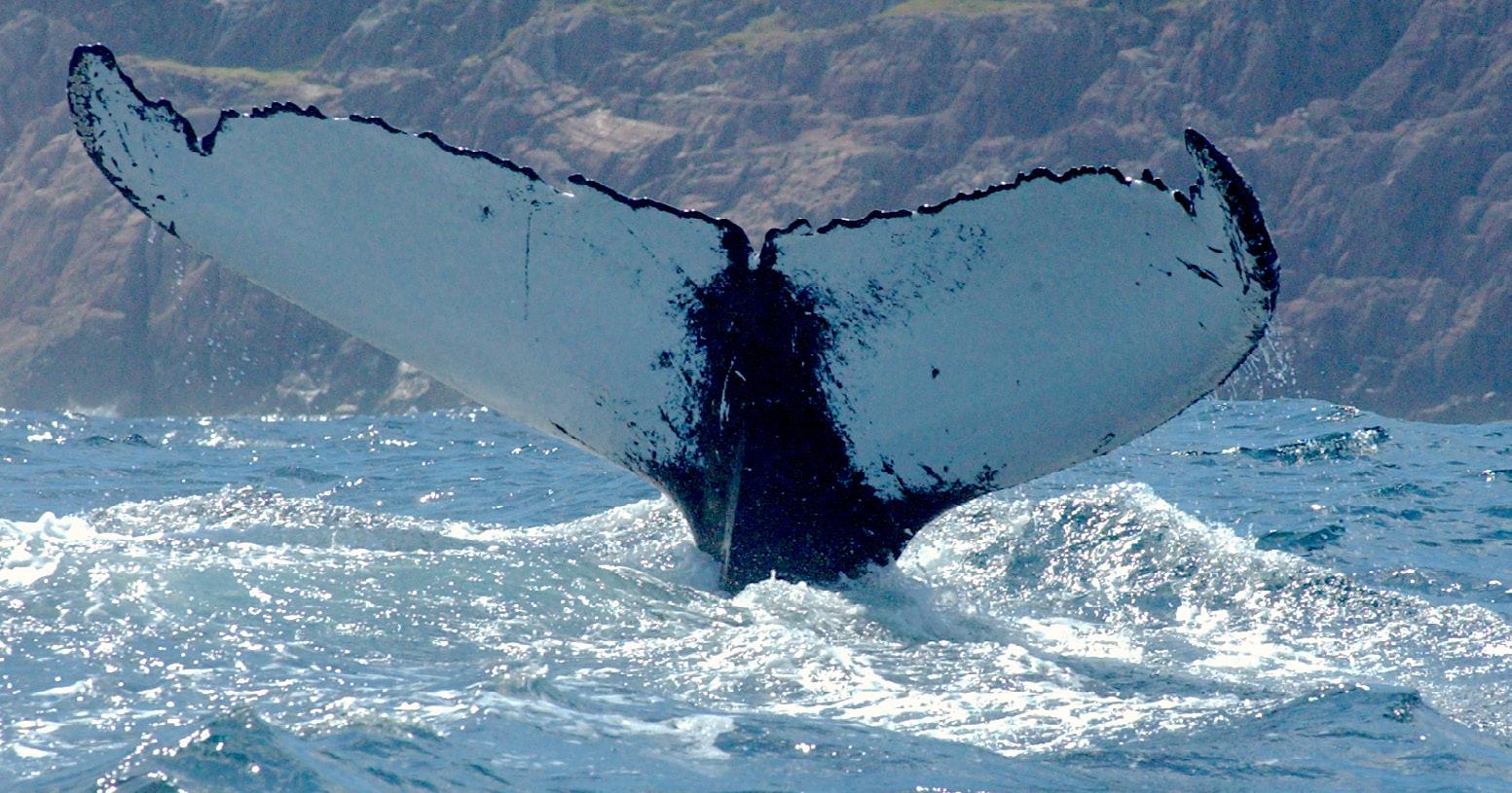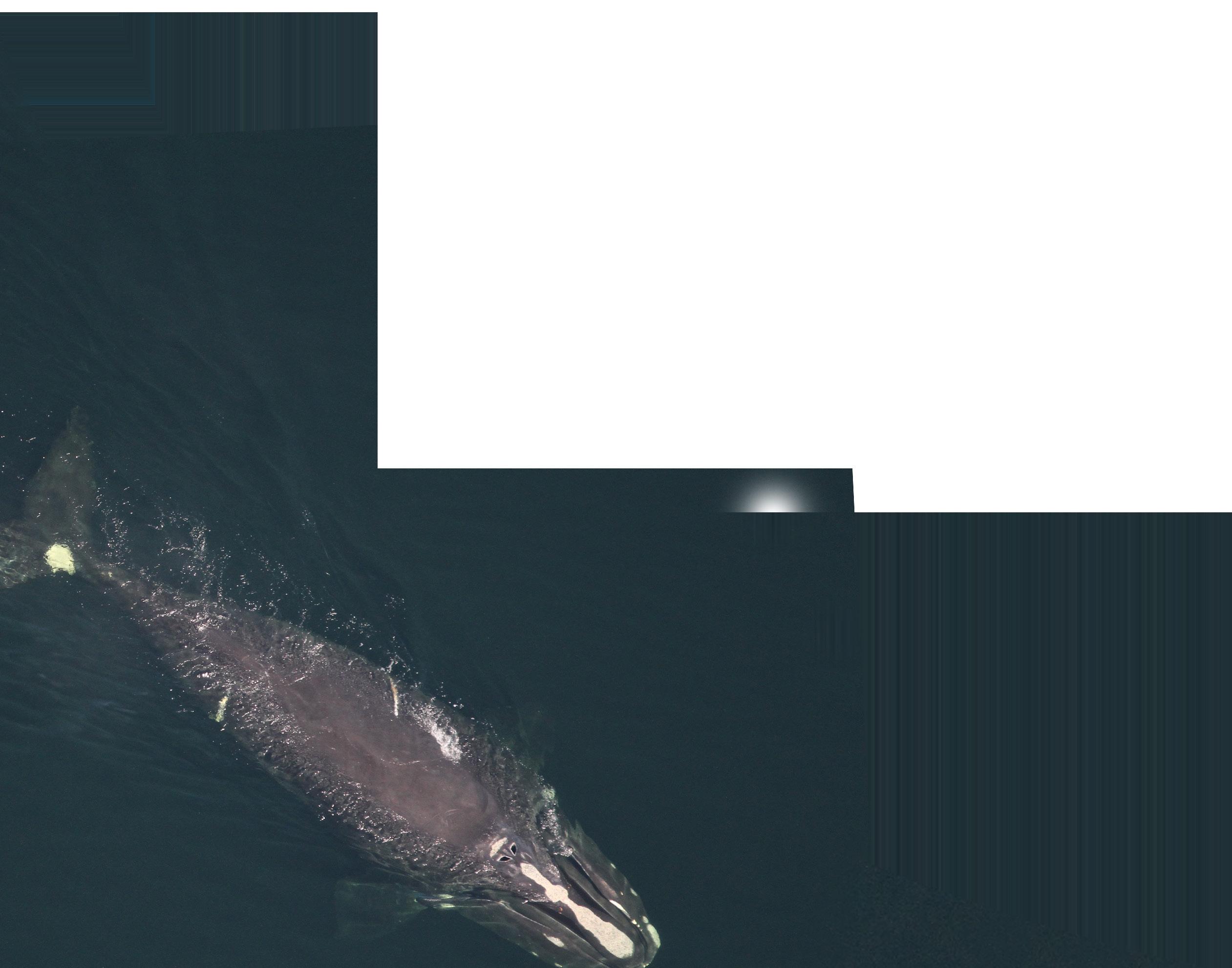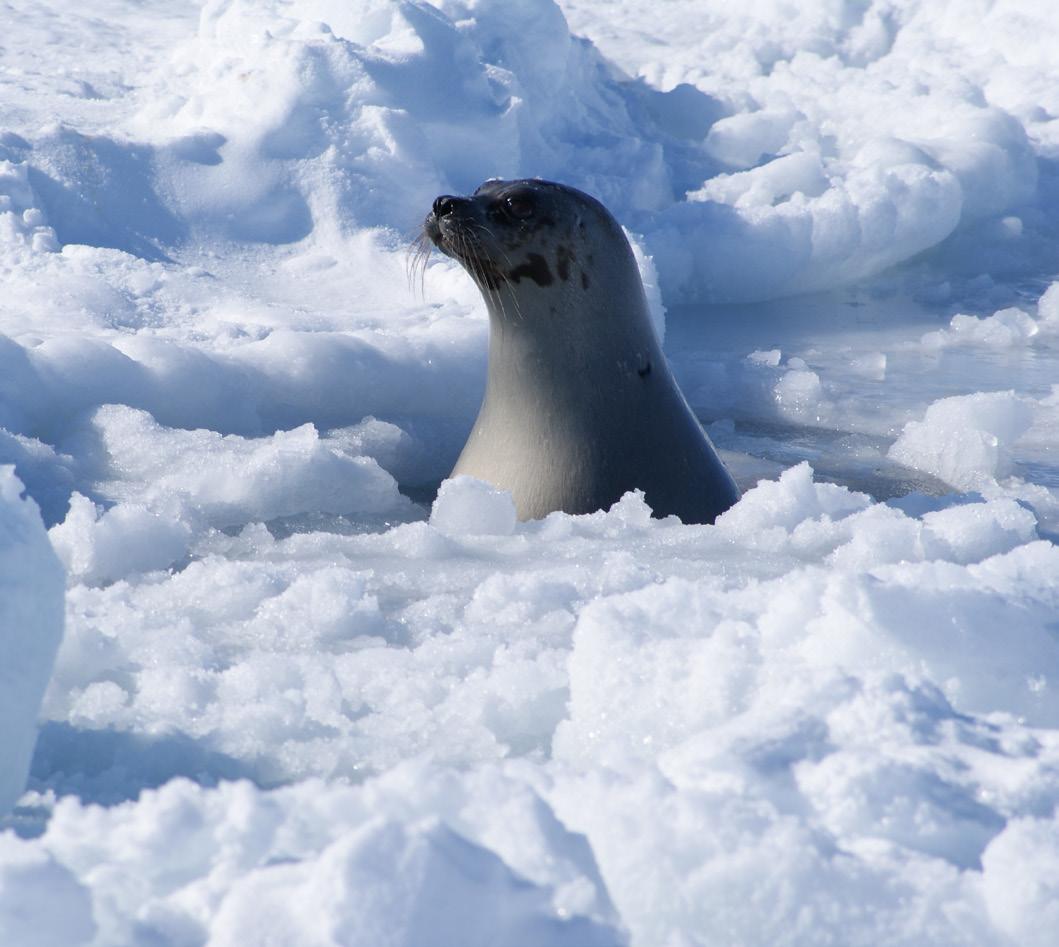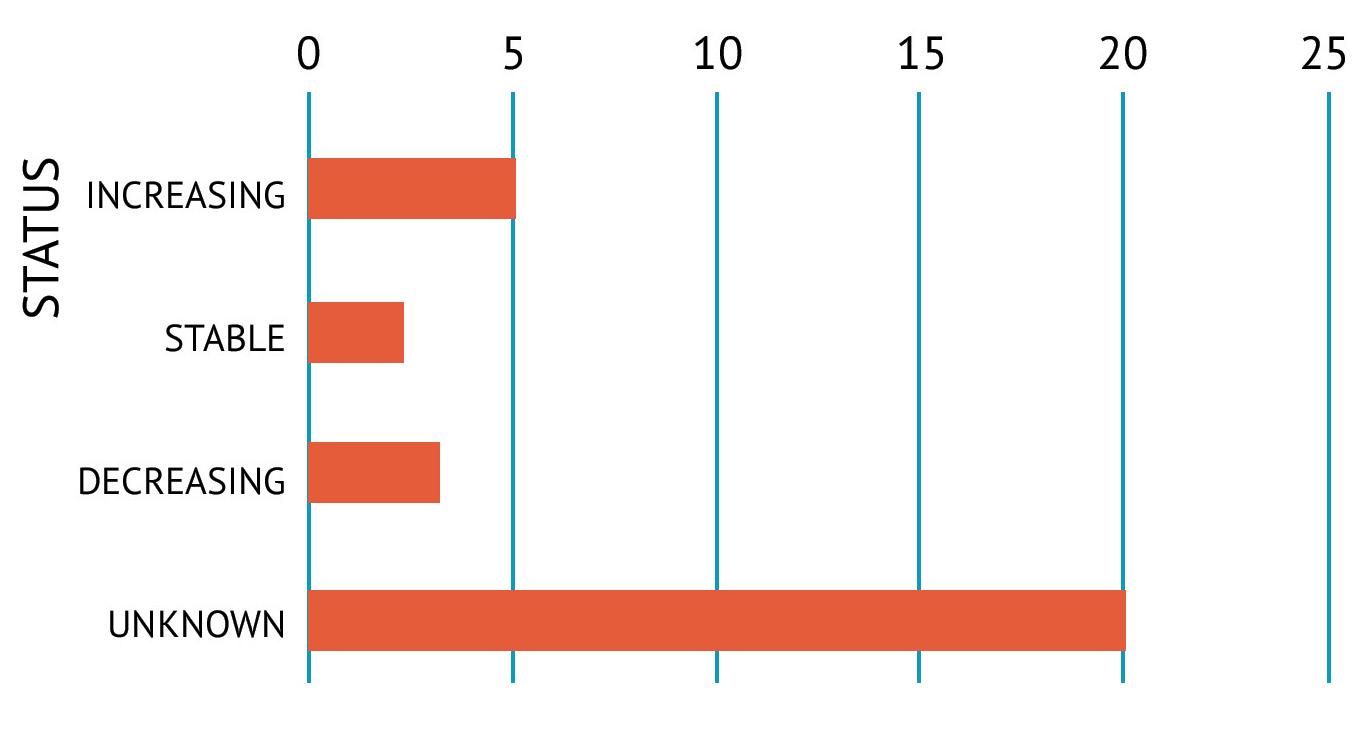
3 minute read
Marine mammals
There are around 30 species of pinnipeds (seals and walruses) and cetaceans (whales, dolphins, and porpoises) found in the Northwest Atlantic. Many of the cetacean species are summer migrants, including fin whales, humpback whales, minke whales, many species of dolphins, and North Atlantic right whales. These seasonal species are thought to give birth and mate in temperate and tropical waters during winter. They then move north to feed in Canada’s Atlantic waters, mainly on capelin, Atlantic herring, and krill. Some marine mammals in the Atlantic are also found in the Arctic. These include species like the beluga whale, ringed seal, and Atlantic walrus. Migratory species such as harp and hooded seals, spend part of the year in the Arctic, but move southward to give birth (or pup) and feed.
Large humpback whale feeding off southeast of St. John’s, Newfoundland in 2017. Credit: Fisheries and Oceans Canada, NL Marine Mammal Section.
Advertisement
The role of marine mammals in the Atlantic food web varies widely, from fish-eating grey seals to slow-moving, copepod- and fish-eating Northern Atlantic right whales. As many marine mammal species are highly mobile and migratory, their movements can reflect changes in prey or in environmental conditions.
Estimating how many marine mammals live in the Atlantic ecosystem, including their distribution, location, and behaviour can help scientists better understand the marine environment as a whole. Some species have been tagged to monitor their movements and diving behaviours using satellite telemetry. This leads to better understanding of their seasonal distribution and habitat use. For many cetaceans, sightings and occasional reports from boats and observers are the main clues to their locations. The first extensive survey of cetaceans along the Canadian continental shelf was carried out in 2007. Results from a second survey carried out in 2016 will help update these estimates in future reports.

North Atlantic Right Whale (Eg 1934 or Sagamore) spotted in the southern Gulf of St. Lawrence in 2018. Images collected under MMPA Research permit number 17355. Credit: NOAA/NEFSC, Peter Duley.
• Our understanding of where marine mammals live across the
Atlantic varies significantly among species. Information about numbers and trends in population sizes is not available for many species (Figure 39). • The decline in sea ice has resulted in increased mortality of harp seals that pup on ice. • Some species may benefit from less sea ice. For example, less sea ice may reduce the number of endangered blue whales being trapped in heavy ice near shore. During heavy ice years, they can be trapped and pushed onto shore while feeding along the ice edge at the mouth of the Gulf of St. Lawrence and along the southwest coast of Newfoundland during the early spring. In 2014, nine mature blue whales were killed along the southwest coast of Newfoundland. • The loss of sea ice extent and northward shift of prey has already led to changes in the distribution of highly mobile pinnipeds and cetaceans. This includes more frequent visits by killer whales to the northern areas of the Atlantic. • Pupping of grey seals in the Gulf of St. Lawrence has gone from almost completely on pack ice during the early 1990s to virtually all on land as sea ice has declined.

Adult harp seal in pack ice off Newfoundland and Labrador in 2012. Credit: Fisheries and Oceans Canada, NL Marine Mammal Section.
Figure 39 : Current population trends of marine mammals in the Northwest Atlantic. Many are unknown.
NUMBER OF MARINE MAMMAL SPECIES











